Reflections on the Tai Po Fire in Hong Kong: Why is Bamboo Scaffolding Used So Widely in Hong Kong? On the afternoon of November 26, 2025, a fire broke out in Hung Fook Court, Tai Po, Hong Kong. The fire quickly spread to eight buildings, eventually escalating to the highest level, "Level 5 Fire Alarm." The fire resulted in 44 deaths and 28 injuries, including the death of a 37-year-old firefighter during the search and rescue operation. It became one of the city's most tragic fire safety accidents. The focus of this tragedy is on bamboo scaffolding, bringing to the forefront a controversial issue that has plagued Hong Kong for decades—why is bamboo scaffolding still prevalent in the concrete jungle of modern cities?
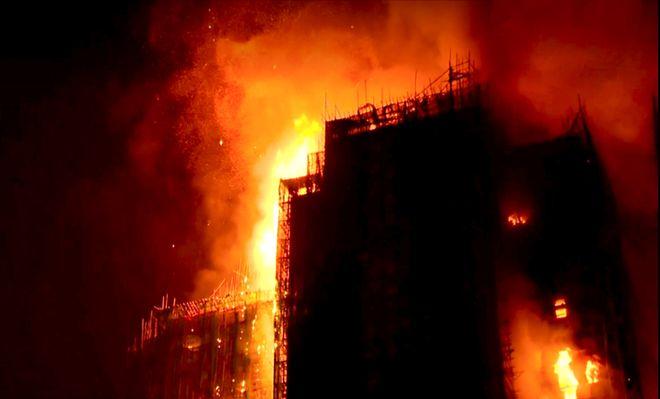
The rapid spread of the fire was mainly due to three factors:
- Material flammability: Bamboo has an ignition point of approximately 300°C, while the polystyrene foam commonly used for exterior wall insulation has an ignition point of only about 240°C; both are highly flammable materials.
- Structural problems: The gap between the scaffolding and the building's exterior wall was only 0.5 meters (the standard requires ≥1 meter), creating a "chimney effect," causing the fire to spread upwards at a rate of 1.5-2 meters per second.
- Environmental factors: The dry weather (humidity 30%-60%) and strong winds amplified the flames, and falling debris ignited a secondary fire on a lower balcony.
However, the safety hazards of bamboo scaffolding are obvious: it is flammable, easily rots, and has poor airtightness. In 2024, Hong Kong experienced 127 fires involving scaffolding, a 68% increase compared to 2019, with 82% of these fires occurring in older buildings constructed before the 1980s. This demonstrates a significant shortcoming in fire safety associated with bamboo scaffolding.

So, knowing the numerous hazards of bamboo scaffolding, why does the Hong Kong construction industry still use it?
1. Cost is the primary consideration. Bamboo scaffolding is far cheaper than metal scaffolding, and bamboo resources are abundant and readily available in Hong Kong, Macau, and Southeast Asia. A construction engineer revealed that in Hong Kong exterior wall repair projects, using bamboo scaffolding can reduce material and labor costs by more than 30%—driven by profit, many developers choose to "compromise safety."
2. Convenience. Hong Kong has dense buildings and narrow streets, and the lighter bamboo is suitable for navigating this environment.
3. Cultural identity constitutes another obstacle. The art of Hong Kong opera stage construction is listed as an intangible cultural heritage, and the Cantonese opera performances held every Lunar New Year rely on traditional bamboo scaffolding for the stage. Sixty-five-year-old stagehand craftsman Li Bo sighed, "The steel frame is too stiff to create curved structures, and machine-cut bamboo loses the warmth of hand-polishing."

Reflection: "Safety Must Not Aging" in Developed Cities
In reviewing this fire, the reason why the fire spread "out of control" was essentially due to the triple superposition of material hazards, structural violations, and environmental factors, and the bamboo scaffolding was the core that connected all the risks. The Level 5 major fire at Hung Fook Estate is a profound test of urban safety standards: when tradition clashes with safety, and when cost and life are at odds, how should construction and building maintenance be prioritized? Hong Kong's predicament is essentially a struggle between "path dependence" and "safety upgrades," and the key to breaking the deadlock lies in breaking the "triple shackles" and ensuring that safety standards keep pace with urban development.
How to strike a balance between cost control and life safety in developed city?
The answer may lie in Shenzhen, just across Shenzhen Bay—this city has promoted the upgrading of scaffolding through government subsidies, and by 2024, the usage rate of steel scaffolding had reached 92%, with fire accidents decreasing by 71% year-on-year.
Hong Kong bamboo scaffolding & Steel scaffolding Comparison
|
Hong Kong bamboo scaffolding |
Steel Scaffolding |
|
|
Material costs |
Low cost (bamboo is readily available) |
High cost (high steel prices) |
|
Fire resistance |
Bad (ignition point 300°C) |
Good(High-temperature resistant steel) |
|
Service life |
Short service life (prone to decay) |
Long service life (strong weather resistance) |
|
Construction efficiency |
High worker efficiency |
Standardized and quick installation |
|
Safety |
Flammable, high risk |
Stable structure, good fire resistance |
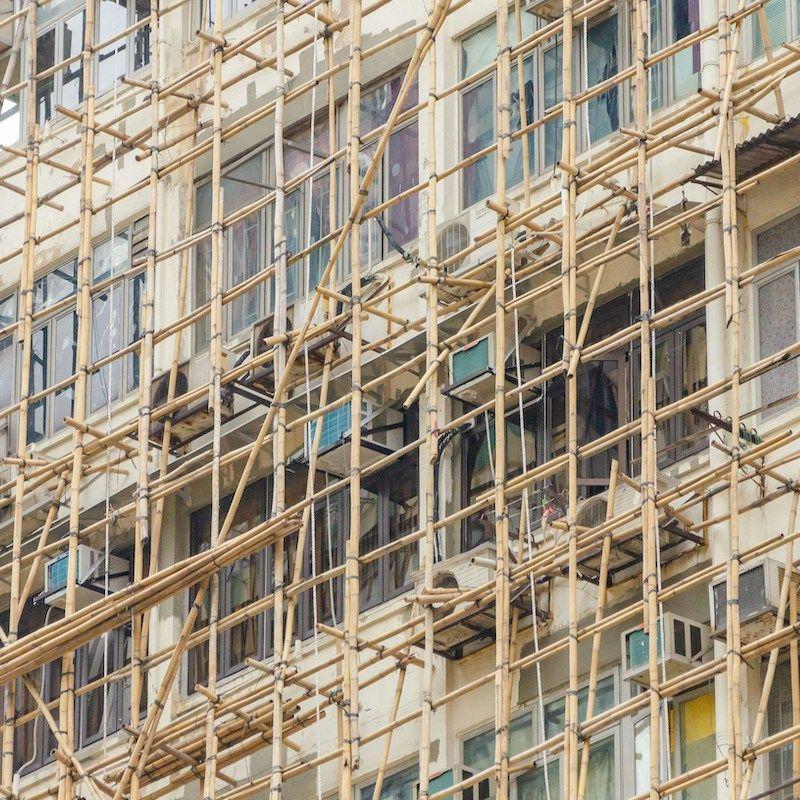
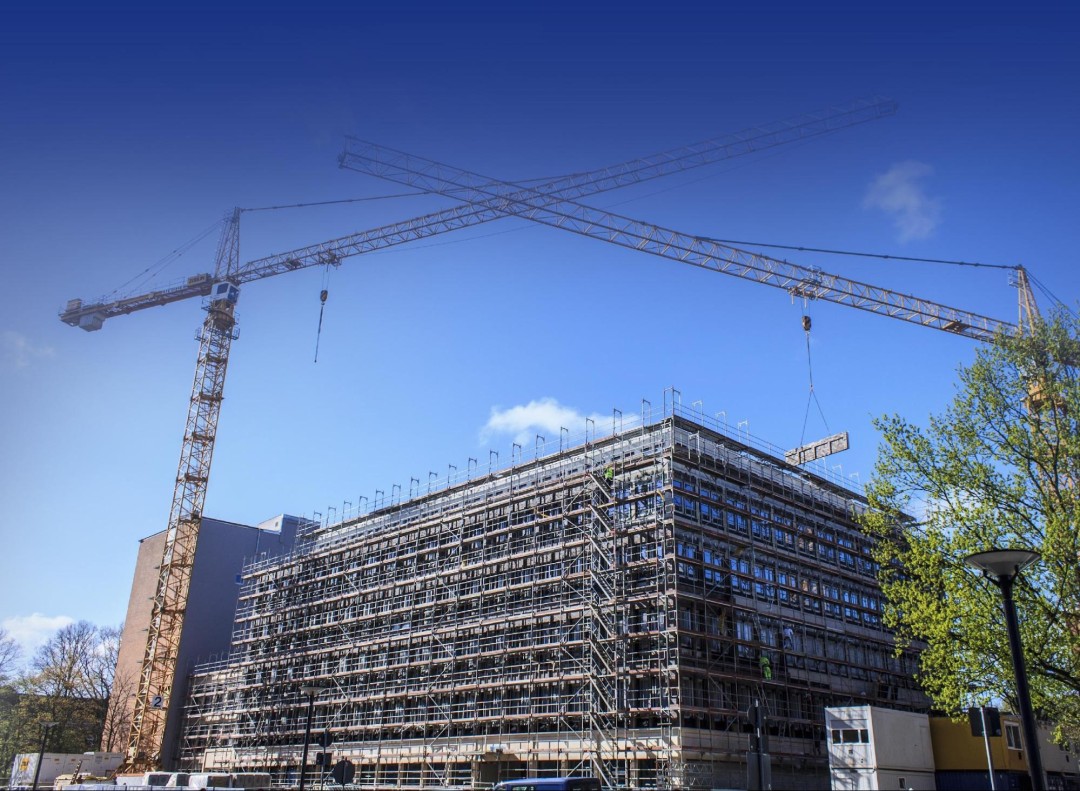
How can Steel Scaffolding prevent fires? 5 beneifts
1. Non-Combustibility of Steel.Steel is non-combustible, meaning it does not catch fire easily or contribute to the spread of flames.
2. Fire-Resistant Coatings and Treatments. These coatings can significantly improve the scaffolding's fire resistance, reducing the risk of it contributing to a fire or being severely damaged by one.
3. Prevention of Fire Spread. Since steel does not burn, it can act as a barrier to the spread of fire on construction sites. Steel scaffolding can help contain the fire to a specific area and slow its movement across the site, buying critical time for evacuation and firefighting efforts.
4. Better Compliance with Safety Standards. Steel scaffolding is often a preferred choice in projects where strict fire safety codes need to be followed, ensuring the construction site meets legal and safety requirements.
5. Design for Safe Egress and Evacuation. Steel scaffolding provides stable and safe platforms for workers to evacuate in the event of a fire. Because steel scaffolds are more stable than other materials, they can offer reliable escape routes during emergencies, especially when combined with fire exits, ladders, and safety protocols.
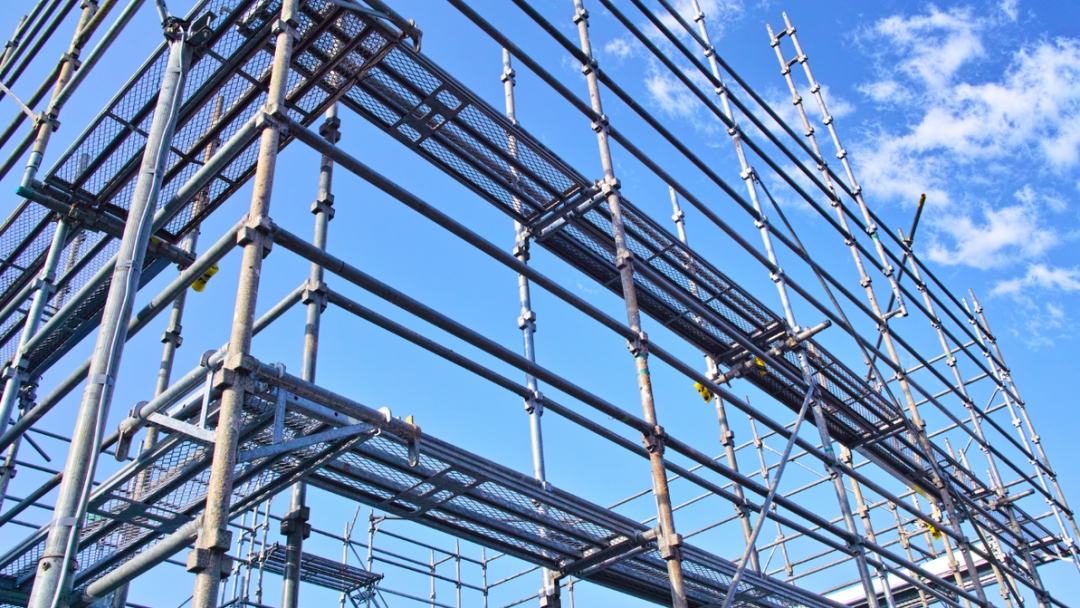
ANTA - China Scaffold Manufacturer, Committed to protecting construction safety!
ANTA Scaffolding is a leading Steel Scaffolding manufacturer dedicated to providing high-quality scaffolding solutions that ensure the safety, stability, and efficiency of construction sites. With years of expertise in the industry, we specialize in the production of durable and reliable steel scaffolding systems designed to meet the most stringent safety standards.
Our commitment to protecting construction safety goes beyond just providing scaffolding. We understand the critical role that scaffolding plays in securing workers and the overall integrity of construction projects. That’s why we manufacture steel scaffolding that is strong, non-combustible, and able to withstand harsh conditions, including extreme temperatures and environmental factors.
√ Customize standards to meet the specific needs of any job site.
√ Offer a variety of scaffolding sizes to meet all needs.
√ Provide comprehensive training on safe scaffolding use.
√ Provide scaffolding services 24 hours a day, 7 days a week.
√ Certified for work safety and compliance with all scaffolding regulations.
√ Meet BS/EN,ANSI,JIS,OSHA,AS/NZs Under QC/QA complying with lS0900l;
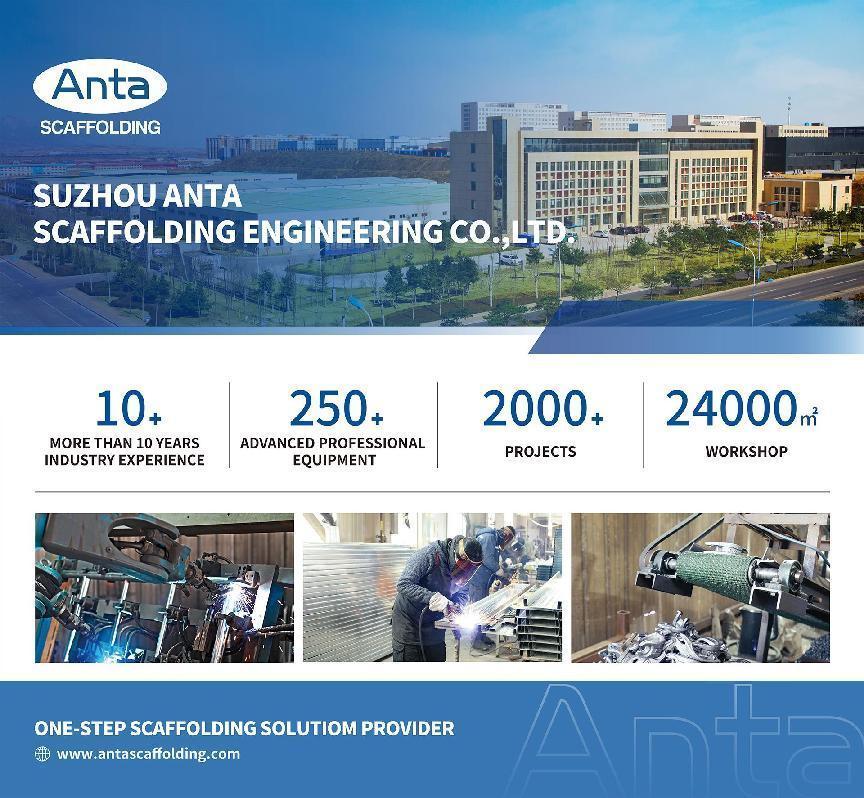
Contact Information:
SUZHOU ANTA SCAFFOLDING ENGINEERING CO.,LTD.
TEL/Whats app:+86 18114610280
Https: www.antascaffolding.com
Email: lane@antascaffolding.com
Address: No.14, Yangshan Science and Technology Industrial Park, No. 8 Jinyan Road, High-tech Zone, Suzhou, China
Media Contact
Company Name: SUZHOU ANTA SCAFFOLDING ENGINEERING CO.,LTD.
Contact Person: Lane
Email: Send Email
Phone: +86 18114610280
Country: China
Website: www.antascaffolding.com
